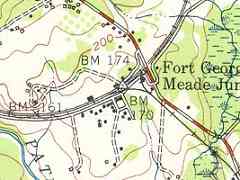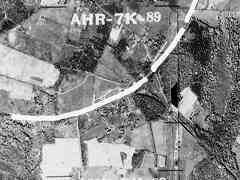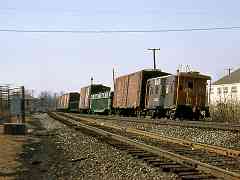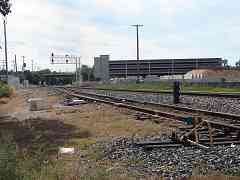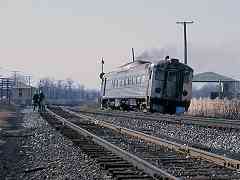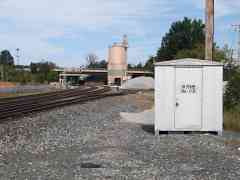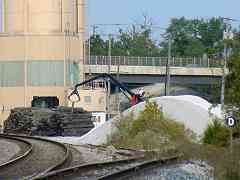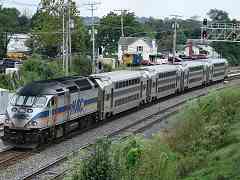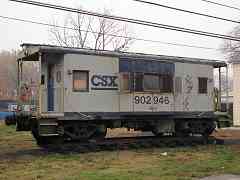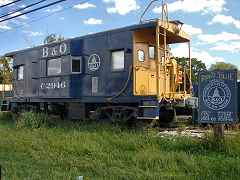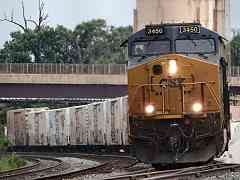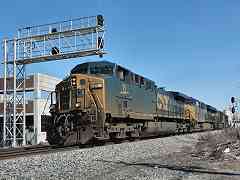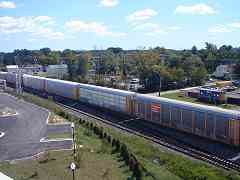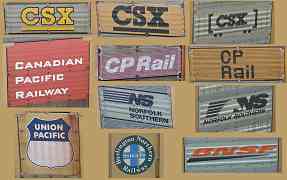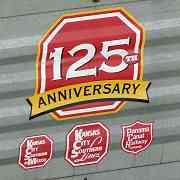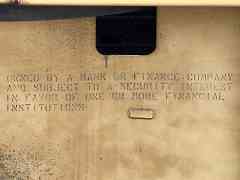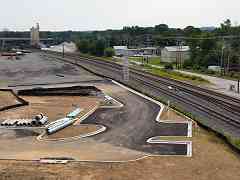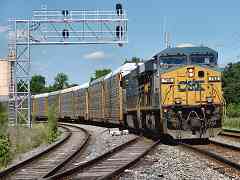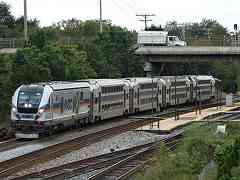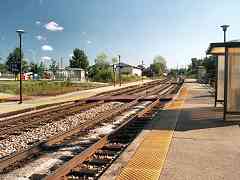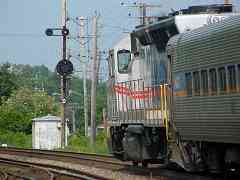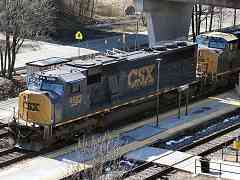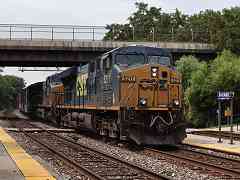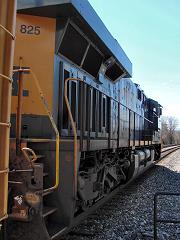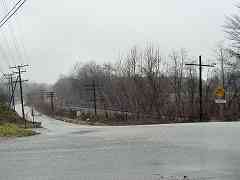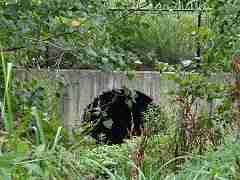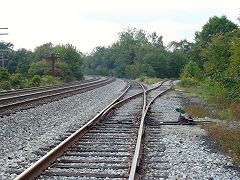|
On a dreary winter day, this is the general view of westbounds shortly after
they depart Savage Station. Brock Bridge Road parallels the tracks. Since
photo time, CSX has removed the trackside utility poles.
A map from around 1900 shows a road split off here to the left, headed
south, crossed the Patuxent River and connected into what is now the
Russett Community accessed via MD 198. Long before Russett, a different
community was planned on the right side of this photo.
Annapolis Junction, with rail service by B&O and A&ER, offered commuting
possibilities, and with Civil War hostilities ended, the planning map at right
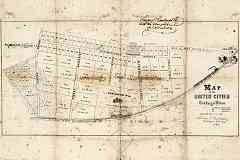 for United Cities was drawn by surveyor Simon Martenet in 1866. I surmise United
Cities sought to replicate the success of Lutherville, Maryland, which was likely
the first planned commuter community in the country. During the 1850s, it
was developed along the Northern Central Railway.
for United Cities was drawn by surveyor Simon Martenet in 1866. I surmise United
Cities sought to replicate the success of Lutherville, Maryland, which was likely
the first planned commuter community in the country. During the 1850s, it
was developed along the Northern Central Railway.
The map depicts the west side of Annapolis Junction where cottage sites are
measured in acres, roods, and perches. One rood is equal to one quarter of
an acre (~1012 square meters). A rectangle that is one furlong (or 10 chains,
or 40 rods) in length and one rod in width is one rood in area, as is any space
comprising 40 perches (a perch being one square rod).
Something went awry because United never came to fruition; instead Junction
Business Park took up residence some 100 years later with the same footprint
as depicted by the 1866 map. The awkward name and, railfan
preferences aside, siting of larger lots on lower-elevation land closest the
railroad may have been factors in the failure. That marked Front Street is
roughly where Dorsey Run Road is found now.
Links:
LoC source map,
1985
| 